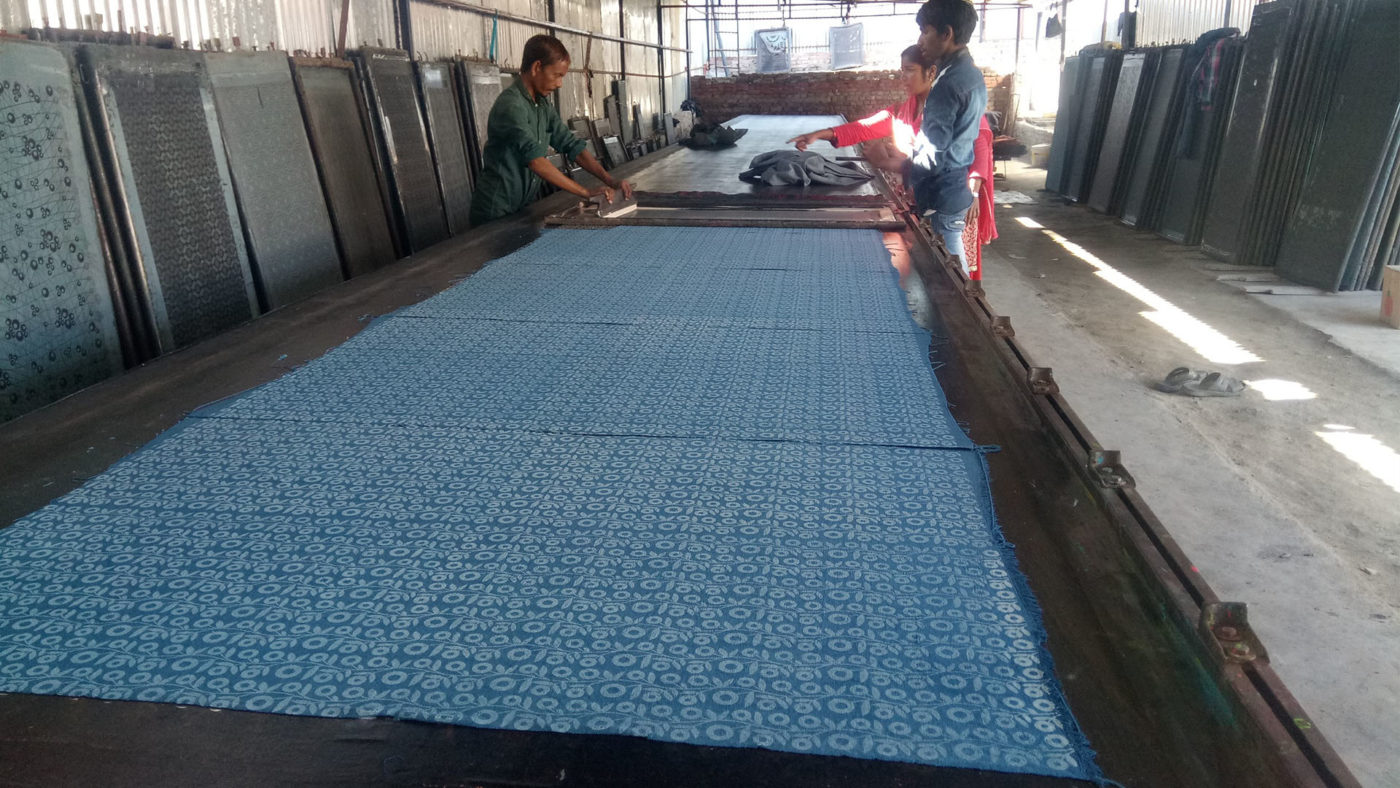Methods, Textile Printing
Textile printing an ancient printing technique
Textile printing is the process of applying color to fabric in definite patterns or designs. In properly printed fabrics the color is bonded with the fiber, so as to resist washing and friction. Textile printing is related to dyeing but in dyeing properly the whole fabric is uniformly covered with one color, whereas in printing one or more colors are applied to it in certain parts only, and in sharply defined patterns.
In printing, wooden blocks, stencils, engraved plates, rollers, or silkscreens can be used to place colors on the fabric. Colorants used in printing contain dyes thickened to prevent the color from spreading by capillary attraction beyond the limits of the pattern or design.
Hand Block Printing
This process is the earliest, simplest and slowest of all printing methods. A design is drawn on, or transferred to, prepared wooden blocks. A separate block is required for each distinct colour in the design. A blockcutter carves out the wood around the heavier masses first, leaving the finer and more delicate work until the last so as to avoid any risk of injuring it when the coarser parts are cut. When finished, the block has the appearance of a flat relief carving, with the design standing out. Fine details, difficult to cut in wood, are built up in strips of brass or copper, which is bent to shape and driven edgewise into the flat surface of the block. This method is known as coppering.
The printer applies colour to the block and presses it firmly and steadily on the cloth, striking it smartly on the back with a wooden mallet. The second impression is made in the same way, the printer taking care to see that it registers exactly with the first. Pins at each corner of the block join up exactly, so that the pattern can continue without a break. Each succeeding impression is made in precisely the same manner until the length of cloth is fully printed. The cloth is then wound over drying rollers. If the pattern contains several colors the cloth is first printed throughout with one color, dried, and then printed with the next.
Block printing by hand is a slow process. It is, however, capable of yielding highly artistic results, some of which are unobtainable by any other method. William Morris used this technique in some of his fabrics.




